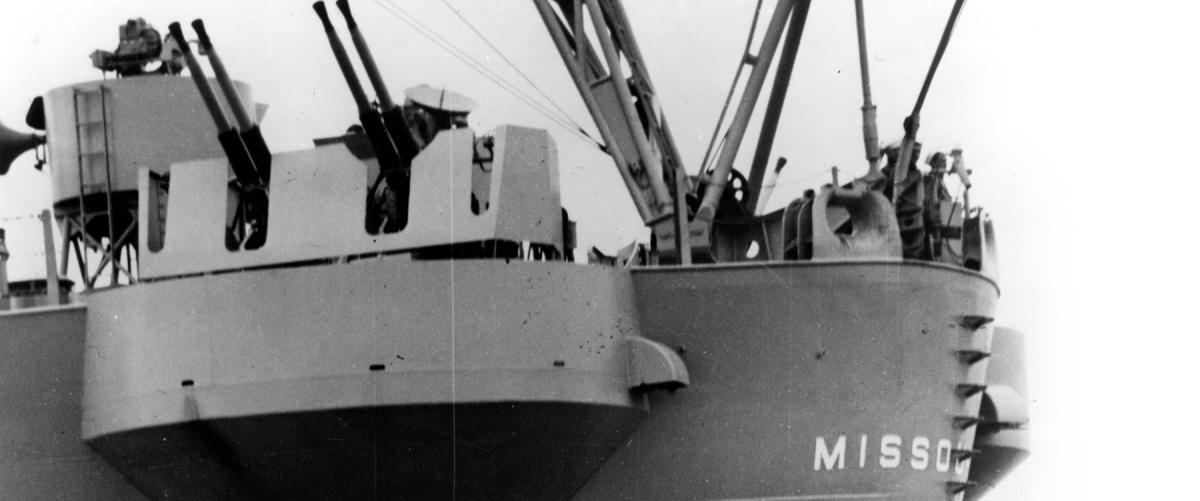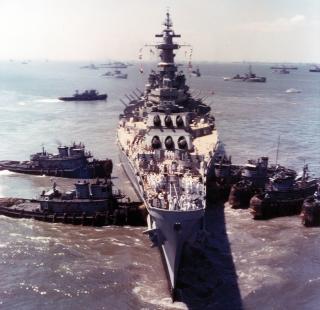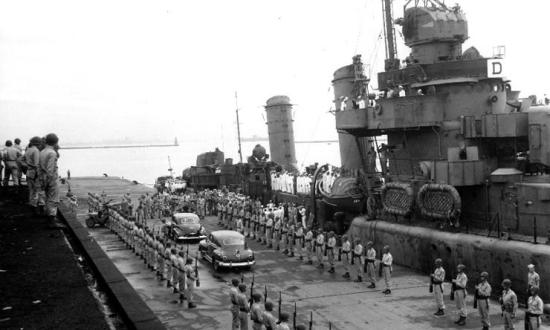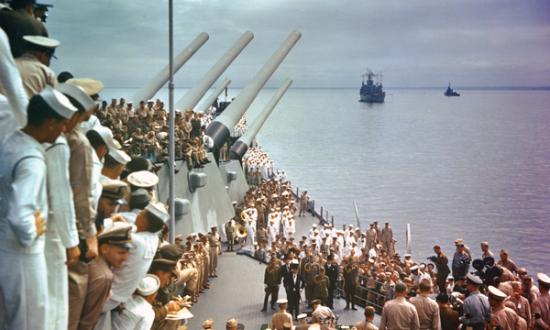The USS Missouri (BB-63), otherwise known as “Mighty Mo,” was launched at the Brooklyn Navy Yard in January 1944 and commissioned that June. The last of the Iowa-class battleships, she fired her nine-gun main battery in the Pacific War, the Korean War, and the first Gulf War, and saw the end of World War II when the Japanese formally surrendered on her decks in August 1945. Deactivated following the Korean War only to be reactivated in the 1980s with the addition of Harpoon and Tomahawk missiles, she was finally retired in 1998 as a museum ship at Ford Island, Hawaii, where she serves today.
One of the most challenging moments in the Mighty Mo’s storied career came on 17 January 1950, when she grounded hard and fast off Hampton Roads en route from Norfolk to the Atlantic. As a result, her captain was court-martialed and removed from command, and Navy Rear Admiral Allen E. Smith was ordered to move on board as commander of the USS Missouri salvage operation. He describes the operation in these edited excerpts from his February 1954 Proceedings article, “Refloating the USS Missouri”:
The job that confronted the Navy was about the equivalent of moving the main RCA building at Rockefeller Center a distance of half a mile. The RCA building is 850 feet high; the Missouri is 888 feet long, and the Missouri’s 57,000 tons approach the weight of the building.
The difference between the normal draft of the ship and the water around the ship after grounding was approximately seven feet. At low tide, she pressed down on her sandy bed with some 18,000 tons weight. . . . Divers reported that the ship was sitting on fine to medium coarse sand, and that this sand had been packed by the ship’s weight to the consistency of a poor grade of cement.
The plan was to refloat the Missouri (a) by increasing her buoyancy and decreasing her displacement by removal of the maximum fluids, ammunition, stores, personnel, etc.; lifting her stern with pontoons, tearing away the sand from underneath her; (b) by pulling off with nine beach-gear rigs, two especially powered salvage lifting vessels, tugs equipped for towing, and by using tugs as a surging and twisting arm; and (c) dredging an exit channel.
The following was accomplished during the period 17 to 30 January: (a) 12,032 tons of weight was removed from the Missouri; (b) 266,845 cubic yards of sand were dredged alongside and in the exit channel; (c) 651.4 man hours of diving operations were conducted; (d) nine sets of beach gear were rigged with winches and pulling gear on the Missouri; and (e) four pairs of pontoons were rigged.
A removal attempt on 31 January failed and the Missouri remained hard aground. On the morning of 1 February, they made another attempt:
The twisting unit of three fleet tugs took its first pull on the starboard bow and began working up to full power at 0545. The port quarter beach gear was set taut at the same time. The ship started swinging to the right almost immediately, and within 15 minutes was 10 degrees to the right of her initial resting position. The twisting unit was then shifted to the port bow. The port quarter beach gear was slacked and the starboard quarter beach gear set taut. Within a very short time the ship began swinging rapidly to port, and almost immediately report was received that the draft astern had increased some five feet.
At 0630 the removal plan was successfully executed. All gear except one pontoon, which had sunk and would be recovered, was delivered to cognizant authorities. Not one single personnel casualty occurred.








